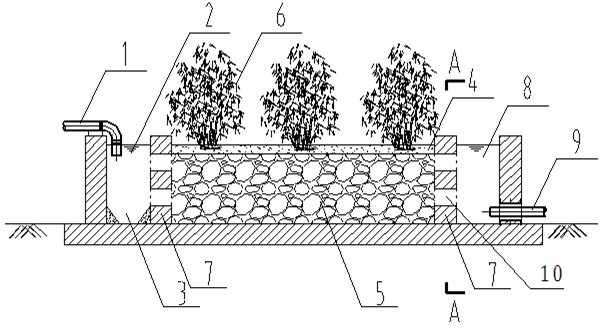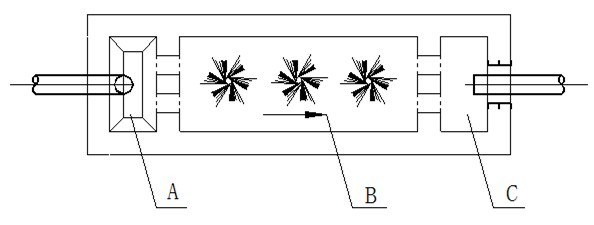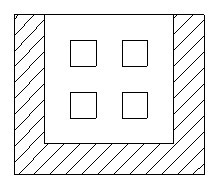A method for repairing micro-polluted water body and subsurface flow constructed wetland system
A constructed wetland system and micro-pollution technology, applied in chemical instruments and methods, multi-stage water/sewage treatment, water/sludge/sewage treatment, etc., can solve the problem of smooth surface that is not conducive to microbial attachment and growth, nitrogen and phosphorus pollutants Low removal rate, limited pollutant removal effect, etc., to achieve the effect of strong impact load resistance, low wetland resistance, and not easy to clog
- Summary
- Abstract
- Description
- Claims
- Application Information
AI Technical Summary
Problems solved by technology
Method used
Image
Examples
example
[0046] Example: The present invention is applied to the water treatment of a slightly polluted river, which is the main supply river of the local drinking water source. The improved subsurface flow artificial wetland of "Luzhu-Shale Brick" is built in the open area near the end of the river. 0.9m), the bottom slope is 2%. The Reed Bamboo Wetland is divided into water inlet area, wetland bed and water outlet area. The water inlet area is 0.5m long, 1.0m wide, and 1.0m high. . The wetland bed is 3.0m long, 1.0m wide, 1.0m high and 0.1m super high. The filling system of wet bed bed is 20cm shale bricks (particle size 40~60mm), 30cm shale bricks (particle size 20~40mm), 30cm shale bricks (particle size 10~20mm) and 10cm gravel (particle size) from bottom to top. diameter 5~10mm). Wetland plants use reed bamboo, and the planting density is 10~20 plants / m 2 . A water outlet area is set at the end of the wetland, with a length of 0.5m, a width of 1.0m and a height of 1.0m, and ...
PUM
| Property | Measurement | Unit |
|---|---|---|
| particle diameter | aaaaa | aaaaa |
| particle diameter | aaaaa | aaaaa |
| height | aaaaa | aaaaa |
Abstract
Description
Claims
Application Information
 Login to View More
Login to View More - R&D
- Intellectual Property
- Life Sciences
- Materials
- Tech Scout
- Unparalleled Data Quality
- Higher Quality Content
- 60% Fewer Hallucinations
Browse by: Latest US Patents, China's latest patents, Technical Efficacy Thesaurus, Application Domain, Technology Topic, Popular Technical Reports.
© 2025 PatSnap. All rights reserved.Legal|Privacy policy|Modern Slavery Act Transparency Statement|Sitemap|About US| Contact US: help@patsnap.com



